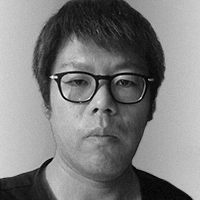Daisuke Muto is an independent dance critic and Associate Professor of Gunma Prefectural Women's University, Japan. His current research interests are 1) modern and contemporary Asian dance history, and 2) alternative theory of choreography. His scholarly publications include Choreography and Corporeality: Relay in Motion, eds. by DeFranz and Rothfield, Palgrave Macmillan, 2016, and History of Ballet and Dance (Japanese), ed. by Sho Suzuki, Heibonsha, 2012. His papers include “What Happens When Contemporary Artists Learn Folk Performing Arts”(Japanese), Bulletin of Gunma Prefectural Women's University, No.38, 2017, among others.
As a dance critic, Daisuke has contributed numberless articles to magazines and newspapers since 2000. In 2005, he was awarded an Asian Cultural Council grant for research on Judson Church movement in New York. He served as a selection committee member of Toyota Choreography Award in 2002, 2005, and 2008. He sat in the artistic board of Indonesian Dance Festival in 2008, 2010, and 2012.
Since he first conducted choreography workshop at Dance Box in Kobe from 2013 to 2015, and also at Gati Dance Forum in New Delhi in 2013, Daisuke is more inclined to practice and production of dance. He has premiered his own choreographic work Surely It Comes About in 2013, and participated as dramaturg in STAY or GO by Jecko Siompo premiered in Yokohama in 2014.
From 2016, Muto curates international exchange program in Sanriku International Art Festival, annually held in the Northeastern shore of Japan devastated by tsunami in 2011.
Last Updated: 2017
